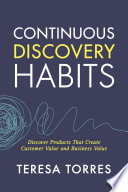

Continuous Discovery is a mindset and practice that emphasizes the importance of ongoing engagement with customers to inform product development. The author, Teresa Torres, argues that traditional methods of product discovery, which often involve long cycles of research followed by development, are inadequate in today's fast-paced market. Instead, Continuous Discovery encourages teams to regularly interact with customers, gather feedback, and iterate on their products. This approach ensures that teams stay aligned with customer needs and can quickly adapt to changes in the market or user preferences. By embedding discovery into the daily routines of product teams, organizations can foster a culture of learning and agility, which is essential for long-term success.
Continue readingOne of the core practices of Continuous Discovery is conducting customer interviews. Torres emphasizes that these interviews should be a regular part of the product development process, not just an occasional activity. By engaging with customers directly, product teams can gain valuable insights into their pain points, desires, and behaviors. The book provides practical tips on how to conduct effective interviews, including how to prepare questions that elicit meaningful responses and how to listen actively. This approach helps teams avoid assumptions and biases, ensuring that the product is built based on real user needs rather than hypothetical scenarios.
Continue readingContinuous Discovery encourages teams to prototype ideas and test their assumptions quickly and iteratively. Torres advocates for a 'test and learn' approach, where teams create low-fidelity prototypes to validate concepts before investing significant resources into development. This process allows teams to identify potential issues early on and make necessary adjustments based on user feedback. By embracing a culture of experimentation, organizations can reduce the risk of building products that do not resonate with their target audience. The book outlines various prototyping techniques and emphasizes the importance of involving customers in the testing process.
Continue readingTo make Continuous Discovery effective, it needs to be integrated into the daily routines of product teams. Torres discusses various strategies for embedding discovery practices into team workflows, such as setting aside dedicated time for customer interviews, incorporating feedback sessions into sprint planning, and creating a shared repository of customer insights. By making discovery a habitual part of the team's operations, organizations can ensure that customer feedback is consistently considered in decision-making processes. This integration fosters a culture of collaboration and shared understanding among team members, ultimately leading to better product outcomes.
Continue readingTorres introduces the concept of Opportunity Solutions Trees as a visual framework to help teams map out customer needs and potential solutions. This tool aids in clarifying the relationship between user problems and the solutions being considered. By visualizing opportunities and their corresponding solutions, teams can prioritize their efforts based on the most pressing customer needs. The Opportunity Solutions Tree also encourages teams to explore multiple solutions for a single opportunity, fostering creativity and innovation. This structured approach helps teams stay focused on delivering value to customers while avoiding the pitfalls of feature creep.
Continue readingA critical aspect of Continuous Discovery is fostering a culture of continuous learning within the organization. Torres emphasizes that teams should be encouraged to learn from both successes and failures. This requires a shift in mindset, where experimentation is seen as a valuable part of the development process rather than a risk. By celebrating learning moments and sharing insights across the organization, teams can build a collective knowledge base that informs future product decisions. The book provides strategies for creating an environment that supports learning, such as regular retrospectives and knowledge-sharing sessions.
Continue readingEffective Continuous Discovery requires alignment among various stakeholders, including product managers, designers, engineers, and executives. Torres discusses the importance of communicating customer insights clearly and compellingly to ensure that everyone is on the same page regarding user needs and priorities. By creating shared understanding and empathy for the customer, teams can work more collaboratively and make decisions that are truly customer-centric. The book offers practical advice on how to present insights in a way that resonates with different stakeholders, helping to bridge the gap between customer feedback and strategic decision-making.
Continue reading